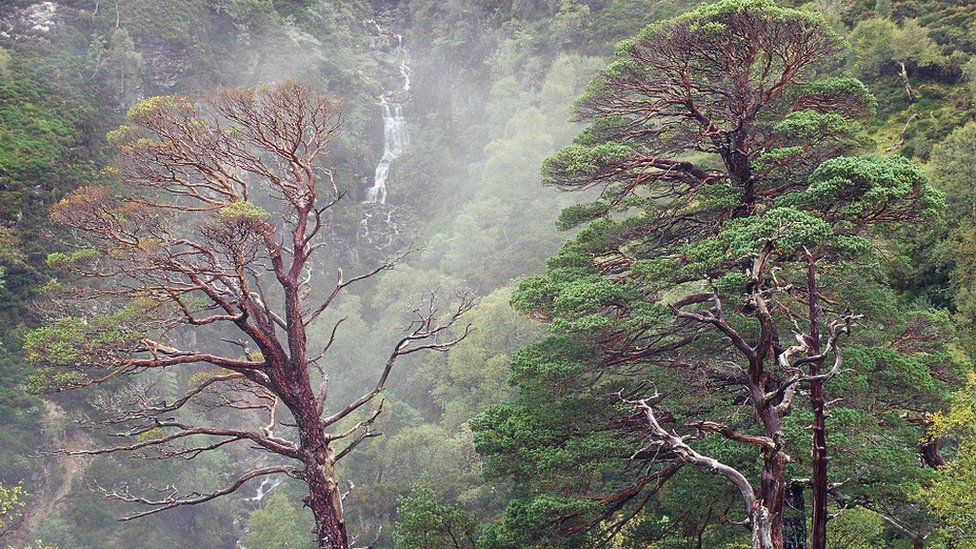Beinn Eighe: Regenerating rainforests on UK oldest reserve
- Published

The rainforests on the UK's oldest national nature reserve in Wester Ross are being left to regenerate naturally for the first time in its history.
New woodlands have been planted every year on the Beinn Eighe reserve near Kinlochewe since it was established in 1951.
They link small remnants of the ancient Caledonian pinewoods which once dominated Scotland's landscape.
NatureScot, which manages the reserve, now intends to leave it to grow and expand without human interference.
Experts say this sort of natural regeneration creates more successful habitats for plant and animal life.
The final 20,000 locally grown trees will be planted out in Glen Torridon towards the end of the year.
Reserve manager Doug Bartholomew said: "The planted woodlands now link together all the fragments of ancient woodland on the nature reserve, creating a much more resilient environment for wildlife and to help combat climate change.
"For the next 70 years, our vision is to see the wood expand even more through natural processes, with a flourishing western pinewood supporting a range of healthy habitats and a rich variety of species."
Much of the site's ancient temperate rainforest was felled during World War Two to supply timber as part of the war effort.
Scotland's rainforest, also known as Atlantic woodland and Celtic rainforest, comprises native woodlands found in parts of the west coast.
Beinn Eighe was the first to be given national nature reserve status after a new law was enacted in 1949.
The expanded forest, mainly made up of native Scots pines, has become a corridor for wildlife like crossbills and golden eagles which allows them to move more freely across a larger area.
About 551 acres (223ha) of forest has now been established compared with 390 acres (158ha) when the reserve was designated.
Conservationist Peter Cairns told BBC Scotland: "Woodland that regenerates of its own accord is much more species rich, much more structurally diverse, which provides a greater range of niches for a greater range of species.
"Planting trees, with the best will in the world, doesn't replicate the natural evolution of a woodland."
NatureScot estimates that about 800,000 trees have been planted and although most are Scots pine the woodlands also contain birch, holly, oak, rowan and aspen.
Many of the species will take hundreds of years to grow to maturity meaning it will be for future generations to experience the vision for Beinn Eighe.
Related Topics
- Published22 November 2021